



 |
|
 |
|
California Bay
Umbellularia californica
First posted February 14, 2004 Last updated February 14, 2004
![]()
The California bay is a common tree in several communities, including the edges of the redwood forest, the oak woodland, mixed evergreen forest, mixed conifer belt, along rivers (riparian habitat), and in wetter parts of chaparral. It is known by many names, as you would expect in a widely-distributed tree: Bay Laurel, Pepperwood, and Oregon Myrtle. The form of the tree is highly variable, depending on the sunlight and wind conditions. It can reache a height of 60-100 feet if it has a good source of water. It can have only one trunk or several, if wind or an accident has pruned it. |
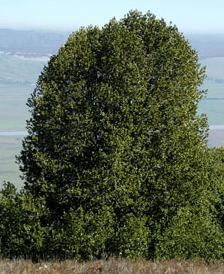 |
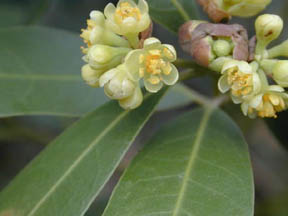 |
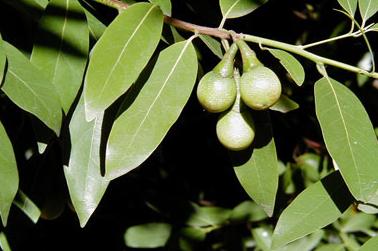 |
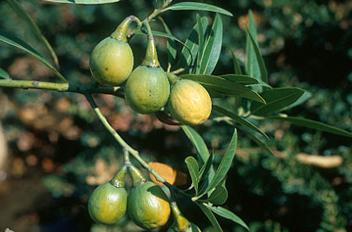 |
| The bay is distinguished by its decorative, fragrant foliage and clusters of cream-colored flowers in early spring. The leaves of this tree are lance-shaped and smooth-edged, usually about 3 to 5 inches in length. They are easily recognized by their aroma, which is quite pungernt. Often used instead of the European bay leaf in cooking. They are twice as strong, however. The flowers (see above, left) appear between Novermber and March, providing one of the few nectar sources for pollinators for that time of year. The small (just under an inch) avovado-like fruits are green at first, then turn yellow, and finally a dull purple just before dropping. The round seed is in the center, about 3/8 inch in size. Many animals eat the fruit and native Americans ground the seeds for a condiment. |
||
The bark of the Bay is smooth when young, furrowed into a vertically-emphasized checkerboard, and in old age can be deeply furrowed. In wetter climates, it has a full covering of moss.
The wood is soft and breakable. Wind damage is common. Exposed heartwood rots easily and hollow are common (note the two broken branches at right). |
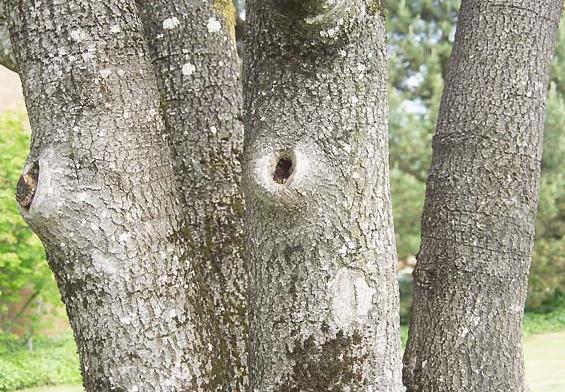 |